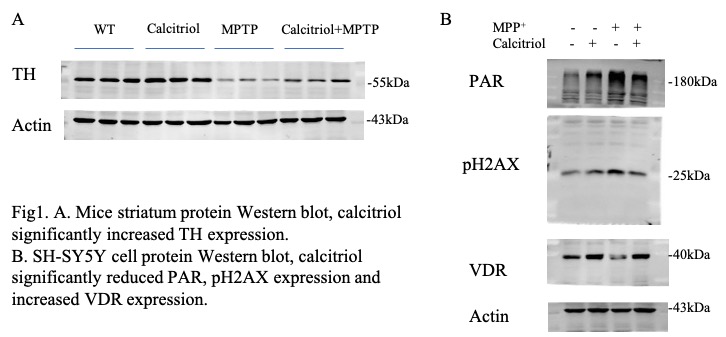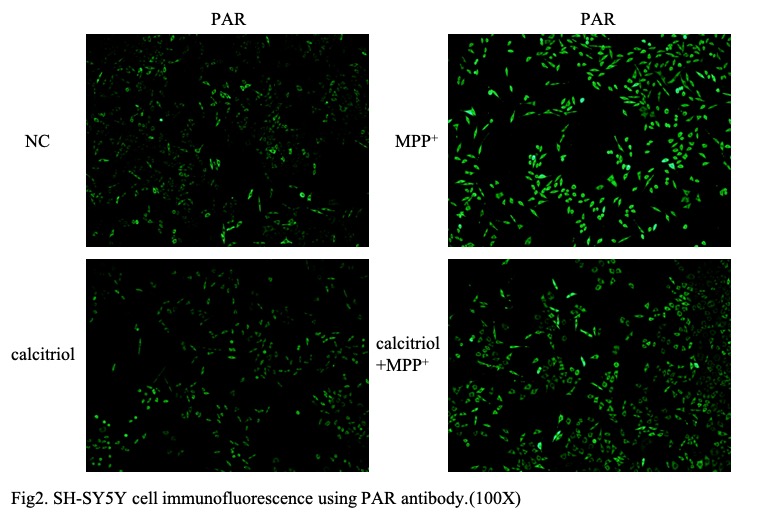Objective: To investigate the role and mechanism of Calcitriol (1,25-dihydroxyvitamin D3) in Parkinson’s mice and cell model
Background: Parkinson’s disease (PD) is a neurodegenerative disorder characterized by abnormal movement. Multiple reports suggest that there is a significant association between PD and low serum vitamin D levels in patients. And there is a genetic polymorphism of vitamin D receptors in Parkinson’s patients. But the protective mechanism of vitamin D in Parkinson’s disease is unclear.
Method: Two weeks after intraperitoneal injection with calcitriol, MPTP subacute Parkinson’s model was started for 7 days, and histological examination was performed after the behavioral test was completed. SHSY-5Y cells were pretreated with calcitriol for 12 hours and then treated with MPP + . After these treatments, cells were used for biochemical analysis.
Results: Calcitriol significantly attenuated the tyrosine hydrlase (TH)-positive neuronal cells.Calcitriol pretreatment in the Parkinson cell model significantly reduced PAR expression, reflecting that calcitriol can reduce PARP activity.
Conclusion: These results demonstrate that calcitriol exhibits substantial neuroprotective effects in this PD animal and cell model.
To cite this abstract in AMA style:
JJ. Hu, T. Wang. Calcitriol Treatment Attenuates Dopaminergic Neurodegeneration in Mice Model of Parkinson’s Disease [abstract]. Mov Disord. 2020; 35 (suppl 1). https://www.mdsabstracts.org/abstract/calcitriol-treatment-attenuates-dopaminergic-neurodegeneration-in-mice-model-of-parkinsons-disease/. Accessed December 8, 2025.« Back to MDS Virtual Congress 2020
MDS Abstracts - https://www.mdsabstracts.org/abstract/calcitriol-treatment-attenuates-dopaminergic-neurodegeneration-in-mice-model-of-parkinsons-disease/


